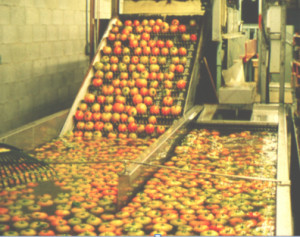After allegedly finding a cockroach in his sandwich at a Subway franchise in Sudbury, Ontario, Patrick Balfour took to Twitter to voice his complaints against the sandwich giant. He’s sparing no expense in the process: He even bought two anti-Subway promoted tweets for $90. His story is a testament to the power of social media to affect sweeping change—or the power of a near-obsessive-compulsive desire to shame a sandwich chain, either one.
Balfour’s Subway saga began 11 months ago, when he contacted @SubwayOntario via Twitter to complain about finding the critter in his sandwich (a turkey footlong on Italian  herb and cheese bread).
herb and cheese bread).
He didn’t have a photo of the sandwich. “I was [disgusted] and got rid of the sub as soon as possible,” he said in an email. “I never thought it would drag on this long or that I’d ever need a photo of a dead cockroach.” But after sending a few tweets to @SubwayOntario, the company eventually responded, asking for Balfour’s contact info. When they failed to follow up with him after 10 days, he reached out again and they responded with the same message.
For a while, Balfour forgot about the cockroach incident, until @SubwayCanada launched a promotional initiative on Twitter. He decided to use their new advertising campaign as an opportunity to contact them again:
SUBWAY CANADA: More than great sandwiches, follow SUBWAY®Canada today!
PATRICK BALFOUR: @SUBWAYCanada I found a cockroach in my sub. I spoke with someone from @SubwayOntario & they said someone would be in touch. Never happened
PATRICK BALFOUR: @mike_check_2012 @SUBWAYCanada I wasn’t paying attention and it was dead. I thought it was a black olive at first until I saw the legs
PATRICK BALFOUR: @SUBWAYCanada @SubwayOntario no response??? Awesome!
PATRICK BALFOUR: @SUBWAYCanada @SubwayOntario a Why are you ignoring my tweets? You’d think that if I found a cockroach in my sub you might want to reach out
Like before, he received a perfunctory response:
SUBWAY CANADA: @patrickbalfour @SubwayOntario We’re sorry to hear this! Plz reach out to our Customer Care team at 1-800-888-4848 or http://bit.ly/1iA8MQV
“I called [the line], even though I thought that was a horrible response,” he told me. “What I got was a 24 hour voice mail. Now I was mad!”
Enraged by the subpar customer service, Balfour promoted the following tweet:
PATRICK BALFOUR: I found a dead cockroach in my sub which I bought in Ontario. This tweet is being promoted! Do you care now @SubwayCanada? #Subway
PATRICK BALFOUR: @draxapup @SUBWAYCanada if they have twitter available to engage with their customers they should solve their problems. Not very smart!










